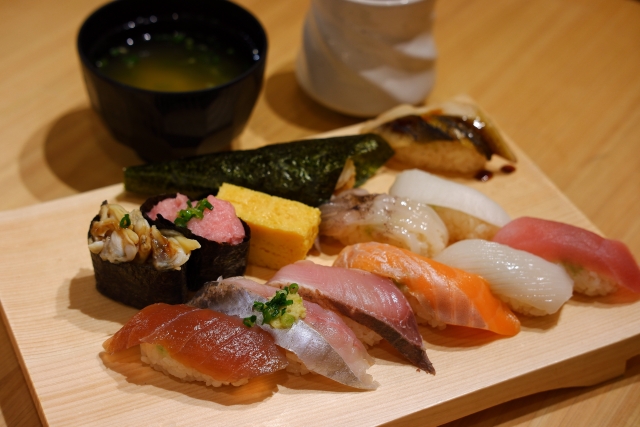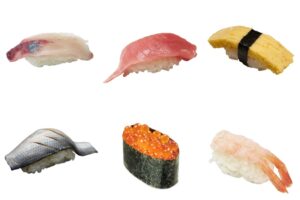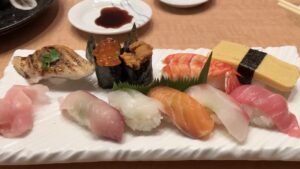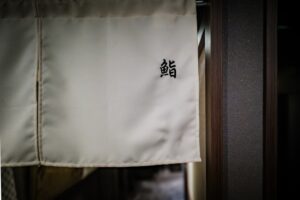To fully appreciate sushi, understanding proper etiquette is essential. This article provides a detailed guide on the correct way to eat sushi, as well as the refined manners expected at high-end sushi restaurants. Whether you’re dining casually or enjoying a special occasion, mastering these etiquette tips will enhance your experience and help you savor sushi with elegance and confidence.



Basic Manners
1. Do Not Separate the Fish and Rice
Sushi is meant to be enjoyed as a combination of neta (fish) and shari (rice). Separating the fish from the rice, eating only one part, or removing the fish to dip it in soy sauce is considered bad manners. Enjoy sushi as it is served to experience the perfect balance of flavors and textures.
2. Eat Sushi in One Bite
A piece of nigiri sushi should ideally be eaten in one bite. Biting it in half may cause the rice to fall apart and can also affect the freshness. If you find the sushi too large to eat in one bite, you can ask the chef to make the rice portion smaller.
3. Be Mindful of Strong Scents Like Cigarettes and Perfume
In sushi restaurants, strong scents such as perfume and cigarette smoke should be avoided. Since sushi is meant to be enjoyed with its delicate natural flavors, overpowering scents can interfere with the dining experience for both yourself and those around you.
4. Dip Only the Fish in Soy Sauce
When using soy sauce, dip only the fish lightly, rather than the rice. Dipping the rice in soy sauce can cause it to break apart and overpower the natural taste of the sushi. The best way is to hold the sushi with your hands or chopsticks, turn it sideways, and lightly dip the fish side into the soy sauce.
5. You Can Eat Sushi with Either Chopsticks or Your Hands
It is perfectly acceptable to eat sushi with either chopsticks or your hands. However, for sushi with sauce (such as anago ), chopsticks are recommended to keep your hands clean. Also, be sure to eat gari (pickled ginger) with chopsticks, not your hands.
6. Order and Eat Sushi in the Right Sequence
There is no strict rule about the order in which you should eat sushi, but for the best experience, it’s recommended to start with lighter-tasting fish before moving on to richer, stronger flavors. If sushi is served on a plate in a specific arrangement, it is best to eat from left to right, as the chef has likely arranged them in an ideal sequence.
7. It’s Okay to Request Sushi Without Wasabi
If you don’t like wasabi, you can simply ask for “sabi-nuki” (without wasabi) when ordering. It is not considered bad manners—what’s most important is that you enjoy your sushi comfortably.
8. How to Use Tsuma and Gari
Tsuma (thinly sliced daikon radish) and gari (pickled ginger) are mainly for decoration and palate cleansing, so it’s perfectly fine if you choose not to eat them. However, gari has a cleansing effect that helps remove fishy odors and prevents food poisoning. Eating gari after fatty or strong-flavored sushi can refresh your palate and prepare you for the next piece.
High-End Restaurants
1. Make a Reservation in Advance
High-end sushi restaurants have limited counter seats, so it is essential to make a reservation in advance.When booking, it’s helpful to inform the restaurant about your budget, any food allergies or dislikes, and the purpose of your visit (e.g., anniversary, business dinner, etc.) for a smoother experience.
2. Avoid Late Arrivals, Cancellations, or Arriving Too Early
Sushi chefs carefully select and prepare ingredients days in advance for their guests.
Many high-quality fish used in sushi are extremely expensive, so canceling at the last minute causes financial loss and is considered disrespectful.
Additionally, arriving too early may disrupt the chef’s preparation, so it’s best to arrive just on time.
3. “Omakase” is the Standard Ordering Style
Most high-end sushi restaurants do not have a set menu because the day’s offerings depend on the freshest available ingredients.For the best experience, it’s customary to order “Omakase” (chef’s choice) and let the chef select the best seasonal sushi for you.
If you are concerned about eating too much, you can inform the chef before the course begins by saying, “I may not be able to eat a large amount.” The chef may adjust the portion size, such as making the rice smaller.
4. Dress Neatly and Avoid Strong Fragrances
You don’t have to wear formal attire, but it is important to dress neatly and maintain a clean appearance.
Also, avoid wearing strong perfumes or smoking before your visit, as strong odors can interfere with the delicate flavors of the sushi.
5. Eat the Sushi Immediately After It’s Served
Sushi is best enjoyed at the moment it is served.
Delaying can cause the rice to dry out and the fish to lose freshness, so it’s best to eat each piece as soon as possible.
6. Be Careful with Watches and Rings on the Counter
Many high-end sushi restaurants use luxurious, single-piece wooden counters, which are expensive and require great care.To avoid scratching the counter, it is recommended to remove large rings and watches before dining.
7. Be Mindful of Your Voice and Smartphone Usage
Fine dining sushi restaurants value a quiet and relaxed atmosphere, so avoid speaking loudly.
If you’d like to take photos of your sushi, it is polite to ask for permission when you are seated by saying,
“May I take photos of the sushi?”
Keeping phone use to a minimum is a sign of respect for both the chef and other diners.

Comments